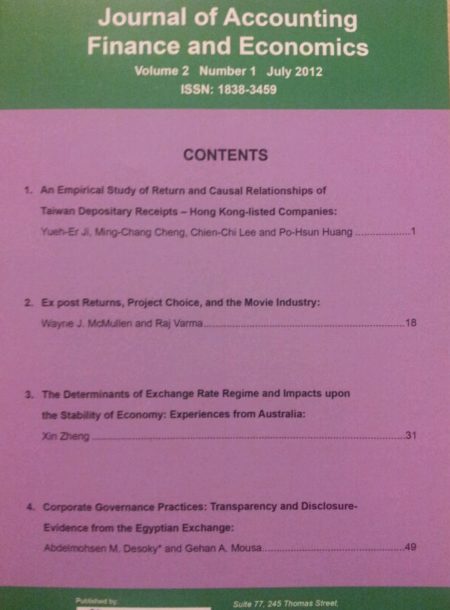Journal of Accounting, Finance and Economics
Vol. 8. No. 2., June 2018, Pages: 40 – 58
A Cross-Country Investigation of Foreign Aid and Dutch Disease: Evidence from selected SAARC Countries
Sakib B. Amin and Muntasir Murshed
The efficacy of foreign aid inflow with regards to dictating the development of the
recipient nations is often questioned in the light of the Dutch disease problem whereby a
surge in such inflows tend to appreciate the respective real exchange rates of the
recipient nations,bottlenecking their export competitiveness. Against this prelude, the
main aim of this paper is to investigate the causal relationship between FAID inflow and
RER movements in context of the four SAARC countries that have been traditionally
dependent on foreign development assistance. The countries considered in this paper
include Bangladesh, India, Pakistan and Sri Lanka. The econometric model is structured
using a multivariate framework incorporating annual time series data of all these four
nations from 1980 to 2014. Following Edwards (1989) and Montiel (1999), real exchange
rates were expressed as country-specific functions of foreign aid and other real
fundamentals as control variables. Augmented Dickey-Fuller unit root test, Johansen
cointegration test, vector error correction model approach and Granger causality test are
considered. Thecorresponding results reveal that both in the cases of Bangladesh and
India, the inflow of foreign aid in the form of official development assistance isstatistically
insignificant in explaining the movements in the respective real exchange rates, neither in
the short run nor in the long run. A possible reason behind this similarity could be the fact
that the central banks in both these nations managed to maintain a strong grip over their
exchange rates which worked as a cushion against RER misalignments and avoided
Dutch disease problems in these countries. In contrast, foreign aid inflows are found to
stimulate appreciative pressures on the real exchange rates of Pakistan and Sri Lanka,
imposing the threats of potential Dutch disease problems within these nations.

